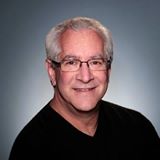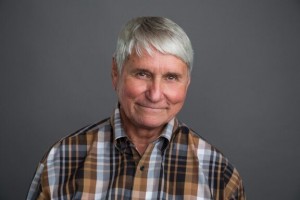In July 2017, Doug Eichten will retire from his position as President of Greater Public after 20 years. If you’re in commercial radio, you’ve probably near heard of Doug or Greater Public. If you’re in public radio, Doug is a fixture – someone who has been involved in the growth of the industry since nearly its inception.
When Doug joined Greater Public (it was then called Development Exchange, Inc.), there was barely a company. It was a concept designed to help public radio stations identify and execute revenue-generating strategies.
He literally built the company from nothing, and today, Greater Public’s annual conference – the PMDMC (Public Media Development and Marketing Conference) – is the largest gathering in  public radio, bringing together 1,100 development specialists and managers from across the country. The combination of Doug’s Midwestern work ethic and his strong reliance on innovation and guile makes him deserving of recognition as “Radio’s Most Innovative.”
public radio, bringing together 1,100 development specialists and managers from across the country. The combination of Doug’s Midwestern work ethic and his strong reliance on innovation and guile makes him deserving of recognition as “Radio’s Most Innovative.”
By way of full disclosure, I have been a member of Greater Public’s board for the past four years, and currently serve as its Board Chair. From that vantage point, I’ve been able to see how Greater Public impacts nearly every aspect of revenue generation for public radio and television. While many complain about pledge drives, Greater Public’s staff works tirelessly to identify best practices to not only make them more effective, but to also help make them sound better.
For a nonprofit industry, fund-raising is a critical factor, and the success of public radio and television could not have happened without Doug and Greater Public. I can tell you from personal experience that every industry needs a Doug Eichten – someone who is passionate and works to ensure that all of its members benefit – and grow – from their association. Doug is also a tremendous person – energetic, positive, and true to the nature of this award, innovative.
When he retires, he leaves big shoes to fill. But Doug also leaves a lessons and learning for everyone, regardless of whether they are in commercial or public media. – Paul Jacobs
JM: How did you become the President of DEI? What were you doing before this?
DE: My entire 43 years in business has been focused on marketing and sales. Following marketing careers in the nonprofit professional theater, healthcare and insurance, and thoroughbred horseracing, I landed an executive position in marketing, sales and development at Public Radio International. After five years, the Board of The Development Exchange, Inc. convinced me to join them as president and sole employee. That was 18 years ago.
JM: Why did you change the name to Greater Public?
DE: I hated the name The Development Exchange, Inc. from day one. After a failed attempt to change the name working with the Board, I said, “Let’s get on with it.” There is real work to do and we settled for the acronym, DEI. It wasn’t a great name, but it was easy and stuck for fifteen years.
Unfortunately, many people thought it stood for “Doug Eichten International.” Not a bad name, but not true. Actually, the Board several years ago told me that it was time to make a change to signal a broader scope for our work. We hired an agency in San Francisco to work with us and came up with Greater Public. Because it is a terrific choice, the transition was very easy.
JM: Describe the services that Greater Public provides.
DE: For 35 years, Greater Public has had a singular mission to serve public radio and public television stations in all aspects of fundraising and marketing. We support the stations through the work of ten discipline advisors, webinars, research projects, workshops, newsletters and a blog, direct mail services, a website packed with tutorials and tools, and finally, we produce a very large conference each year called the Public Media Development and Marketing Conference.
JM: What was the state of revenue generation in public radio when you first took the job?
DE: Of course, every station conducted on-air pledge drives. Just about all of them were too long and ineffective. Direct mail campaigns for membership were, at best, primitive. Most stations had not focused on enhanced, on-air underwriting. If a business called a station and asked to sponsor the station or a program, messages were prepared and aired. The message included not much more than the name of the sponsoring organization. A $365 individual gift was called a major gift. Very few people working in fundraising had formal training or much experience. Of course, there were exceptions, especially the stations in the largest markets. But they too had a long way to go.
JM: What has been the biggest change you’ve witnessed during your long tenure at Greater Public?
DE: On the positive side, it is the professionalization of the development staff at just about every station. Of course, the major change is the steady move to all things digital, delivery platforms beyond “the tower,” and the rapidly changing usage patterns of the user/listener/viewer.
JM: How has Greater Public been able to elevate the way that public radio and television stations generate revenue?
 DE: Since I had very little money to work with when I took this job, I hired fundraisers with strong reputations working at stations to be our Station Based Consultants. They were paid by the hour and were highly experienced in pledge drives, individual giving and corporate underwriting. They took stations’ calls, led workshops, wrote newsletter articles and built support through the website. In addition, they worked closely with me in planning the national conference.
DE: Since I had very little money to work with when I took this job, I hired fundraisers with strong reputations working at stations to be our Station Based Consultants. They were paid by the hour and were highly experienced in pledge drives, individual giving and corporate underwriting. They took stations’ calls, led workshops, wrote newsletter articles and built support through the website. In addition, they worked closely with me in planning the national conference.
As we grew, we needed more and more of their time. Some of them became independent consultants and I brought on other individual consultants working on retainers. We have always tried to keep this work personal and customized for stations of all sizes and formats.
JM: Who is public radio’s/television’s biggest competition?
DE: I think it is competition for time, attention and loyalty from all the branches of social media and digital media. Public media is part of this major new landscape, so it is a player and competes with endless media outlets.
JM: Approximately 10% of public radio’s listeners make a donation. What needs to be done to increase that percentage?
DE: First of all, we have practically no information about why some people don’t contribute and why some stop giving. Before we come up with even more approaches of asking, we need to understand everything we can about our users/listeners/viewers as individuals. We need major advances at each station to get to know our customers.
I have been contributing to several public media organizations for many years. They still don’t know anything about me, except my contact information and my giving history. It’s time to build a relationship with each of our donors and identify prospects and build relationships with them.
JM: Businesses and organizations have a lot of options about where they invest their dollars. What’s public radio’s pitch?
DE: Same as it has always been. We can get you in touch with one of the most unique, committed and loyal audiences you will find anywhere. No waste. Great target segment for you.
In addition, we have plenty of research that confirms the “halo effect” of hearing/viewing your messages through any of the delivery platforms. Where can you go with your advertising where the listener/user/viewer sees you as saintly for just sponsoring their beloved public media?
JM: Greater Public hosts the largest convention in public media – the PMDMC (Public Media Development and Marketing Conference). Why has it become the most successful gathering? What makes it so special?
DE: The content planners, led by our C.O.O, Deborah Lein, have a total dedication to serving each and every attendee. We love our exhibitors, sponsors and the national organization leaders that attend; but the conference content is totally geared toward the station staff, large and small stations, radio and TV, music and news, experienced staff and those just entering the business. I have been thrilled that we have been able to expand this important work to all stations, TV and Radio, through our great partnership with PBS.
JM: What’s your best advice for stations as well as salespeople for how to succeed selling public media?
DE: Get to intimately know your audience. Hear their stories and retell them often. Your job is to share this great treasure, our audience, with corporations, nonprofit organizations, individual donors and foundations. Know your audience beyond the numbers. Build relationships with each of them that can be shared with those who will invest in this wonderful enterprise.
JM: Give public radio/television stations a grade, and identify areas where you think they can improve.
DE: This question hits where I live. I have taught master’s degree level marketing courses at two universities for 23 years, so here goes:
Of course, all these grades are the average. There are many stations that are doing much better and many even doing worse. The good news is that there is lots of opportunity to improve.
JM: Public radio and television are nonprofits and as we hear during pledge drives, they’re on a constant search for dollars. Where’s the big opportunity for growth?
DE: I don’t believe there is a magic answer, with the exception of using every tool and opportunity at the station’s disposal to build lasting relationships with users/viewers/listeners. Everyone needs to do a much better job at retaining the customers they now have and using new delivery platforms and up-to-date marketing tools and methods to grow new audiences.
JM: You’re going to retire in 2017 – what’s the one thing that you hope the leaders in public media do in order to achieve a stronger financial foothold?
DE: I believe that the leadership and owners of every station and national media organization should immediately assess how well they are doing in making way for the next generation of leaders. We need to identify, encourage, support and promote future leaders. I did not say guide and mentor. Assign them to work at the top of the organization, listen to them and assist the organization to adopt their ideas.
It is time to end the practice of 50 and 60 someone’s planning the future for 30 and 40 someone’s. We all know the media landscape is undergoing drastic change. That’s what makes life exciting. But it is time for the future generation of leaders to take their place at the table.
INNOVATION QUOTE OF THE WEEK
“You’ll hit gold more often if you simply try out a lot of things.”
Ira Glass – Host/Producer This American Life
More of Radio’s Most Innovative
- Radio's Most Innovative: High School Radio Day
- Radio’s Most Innovative: All Christmas Music
- Radio’s Most SKINnovative: Jim McBride
- Radio’s Most Innovative: Jerry Lee
- Radio’s Most Innovative: Shazam For Radio
- The Revolution Will Not Be Monetized - December 30, 2024
- What Kind Of Team Do You Want To Be? - October 4, 2024
- The Revolution Will Not Be Monetized - August 20, 2024








Leave a Reply